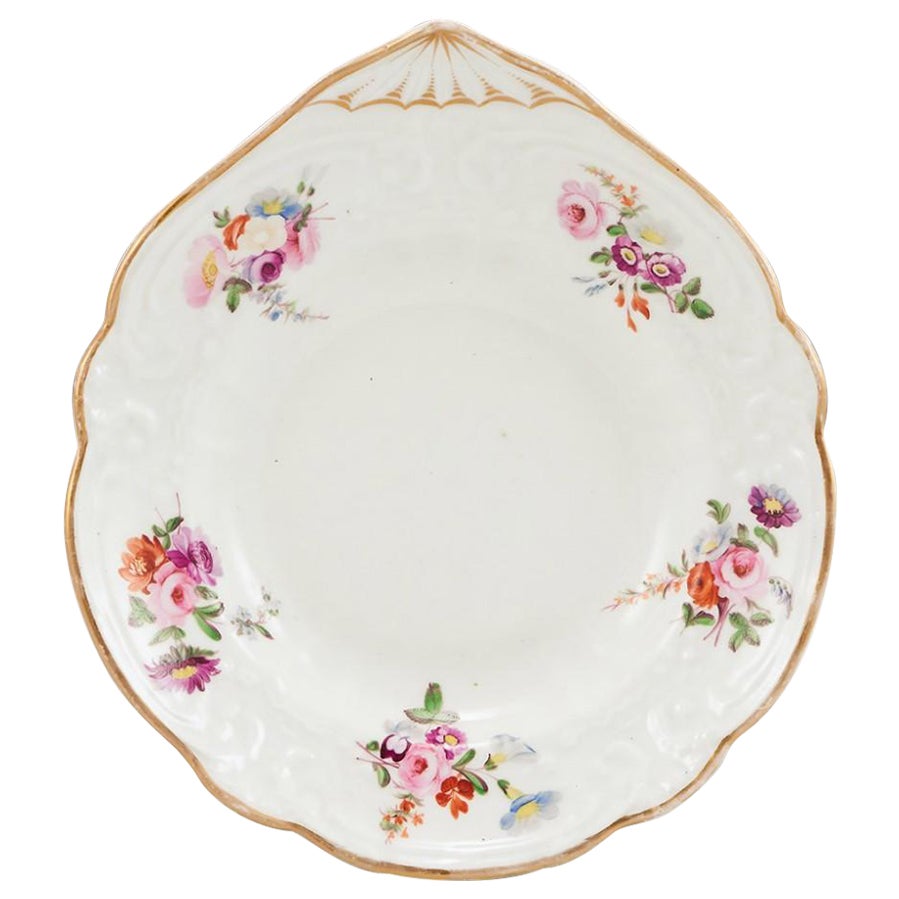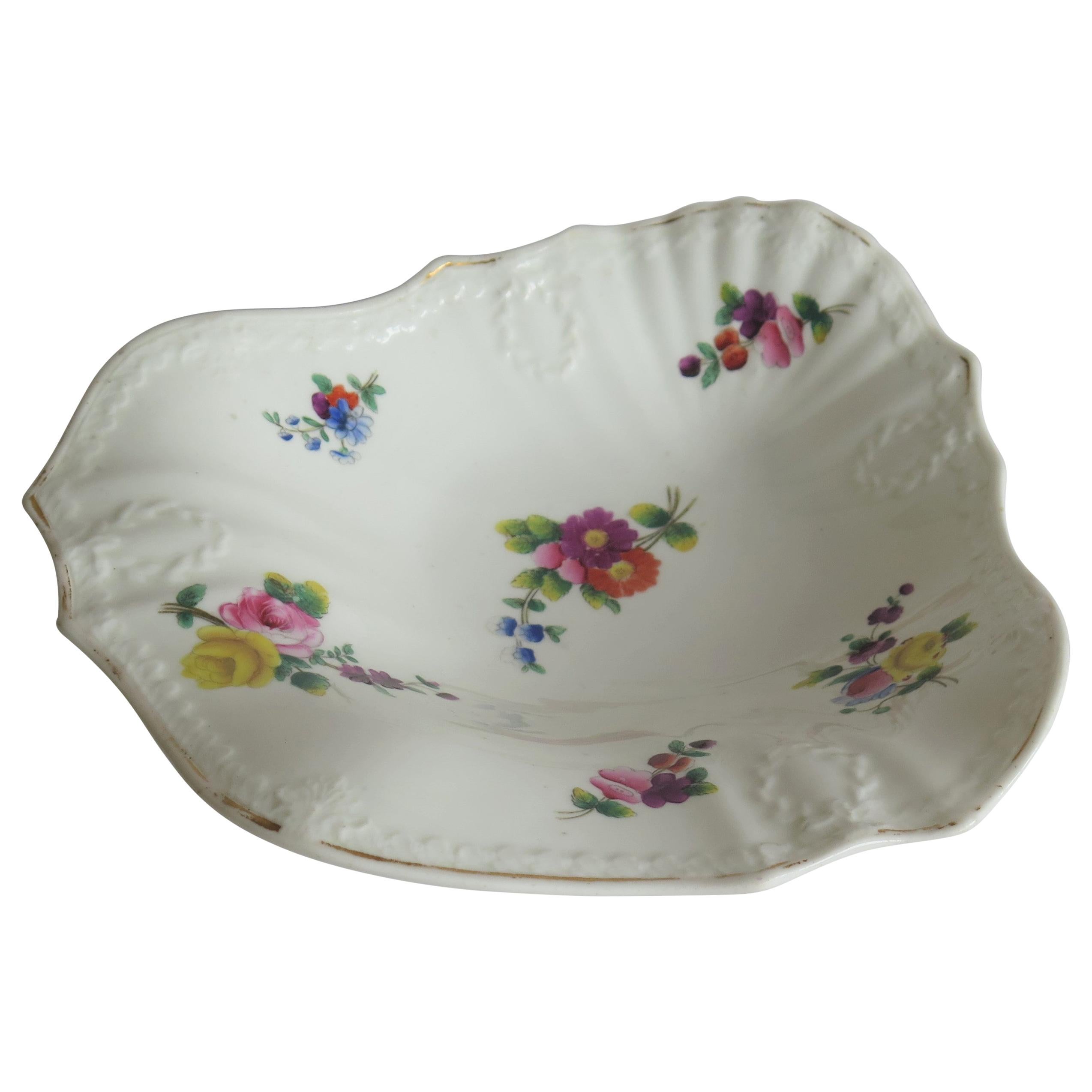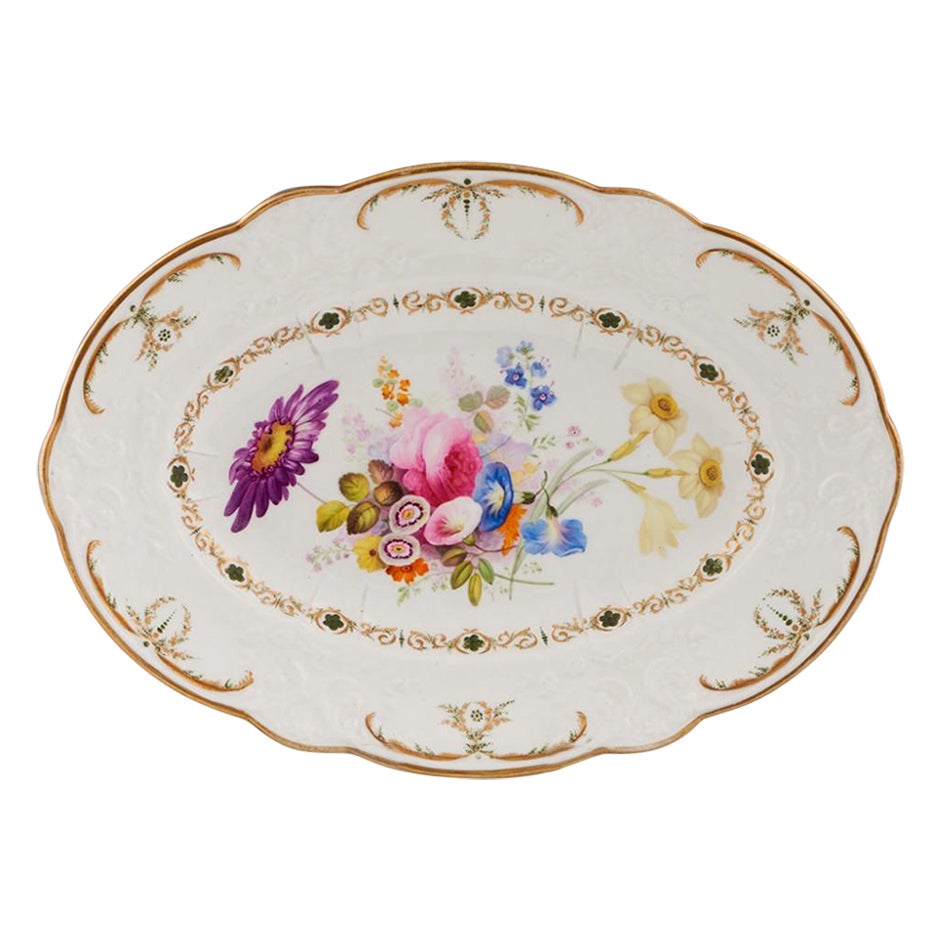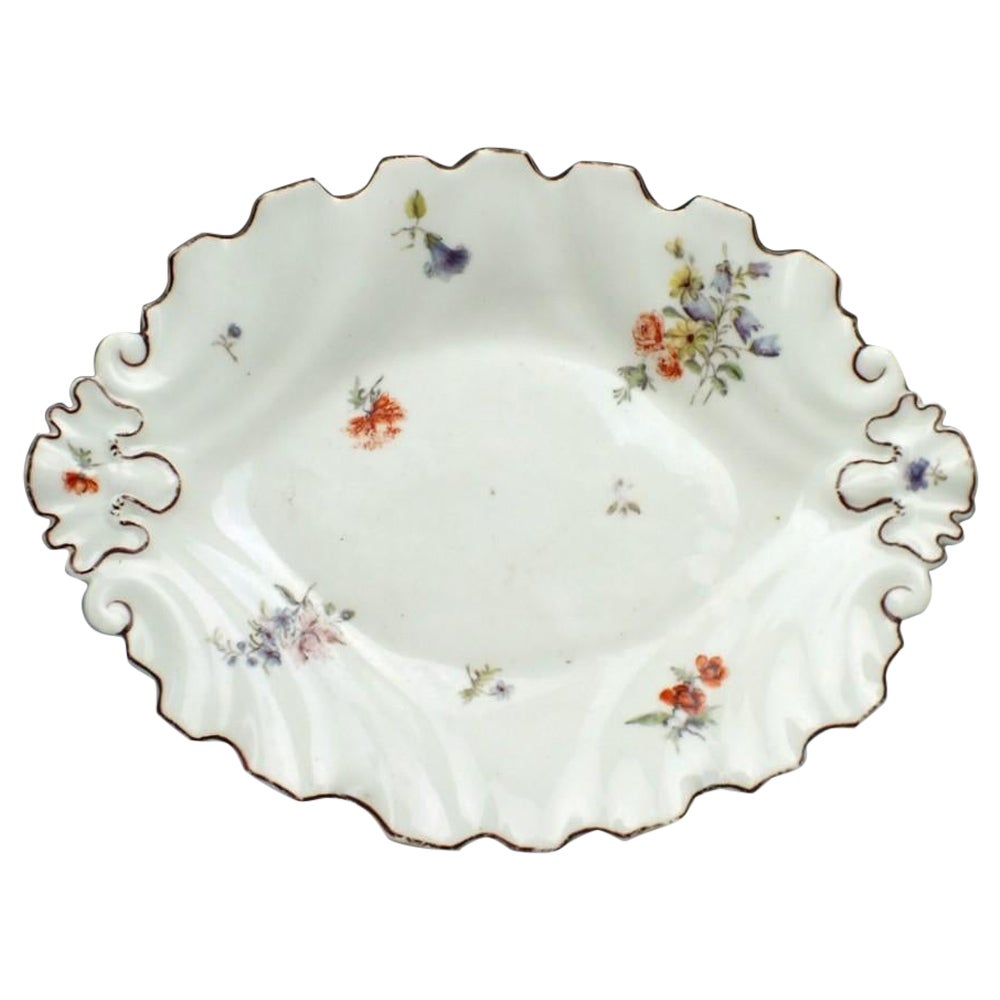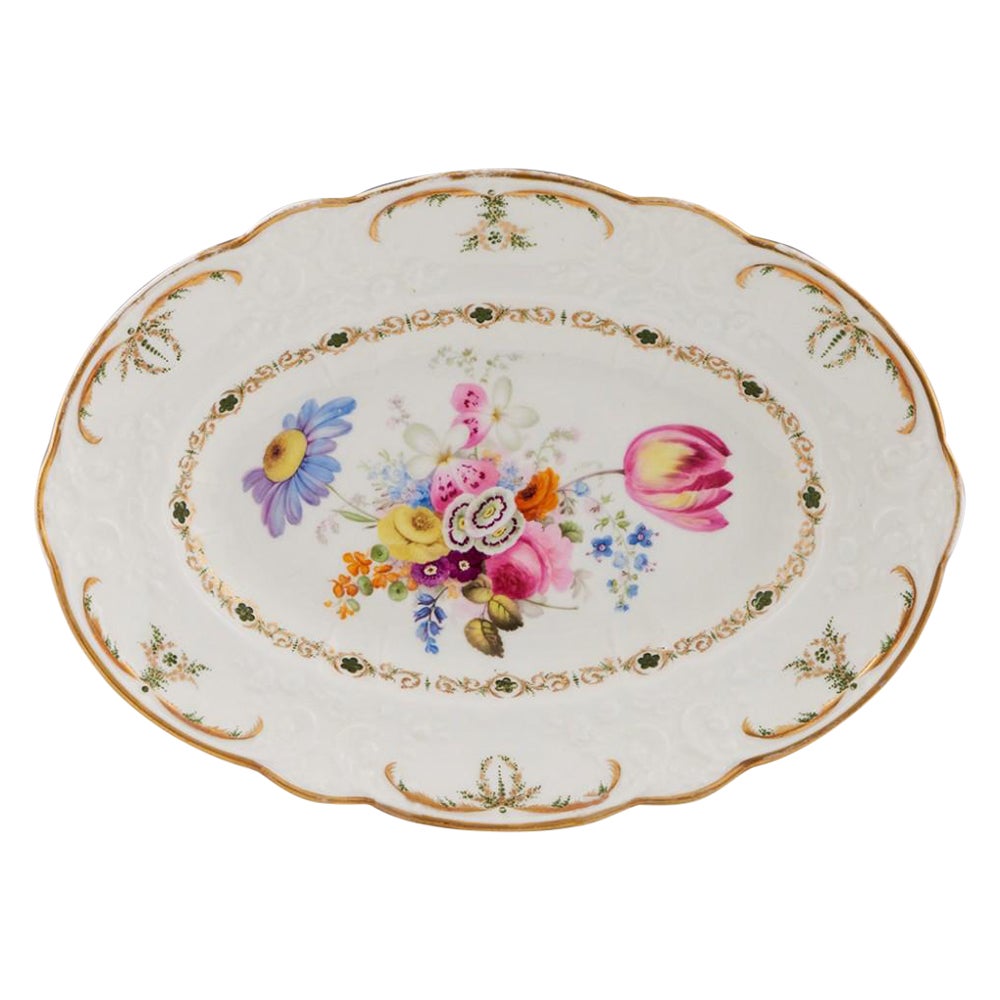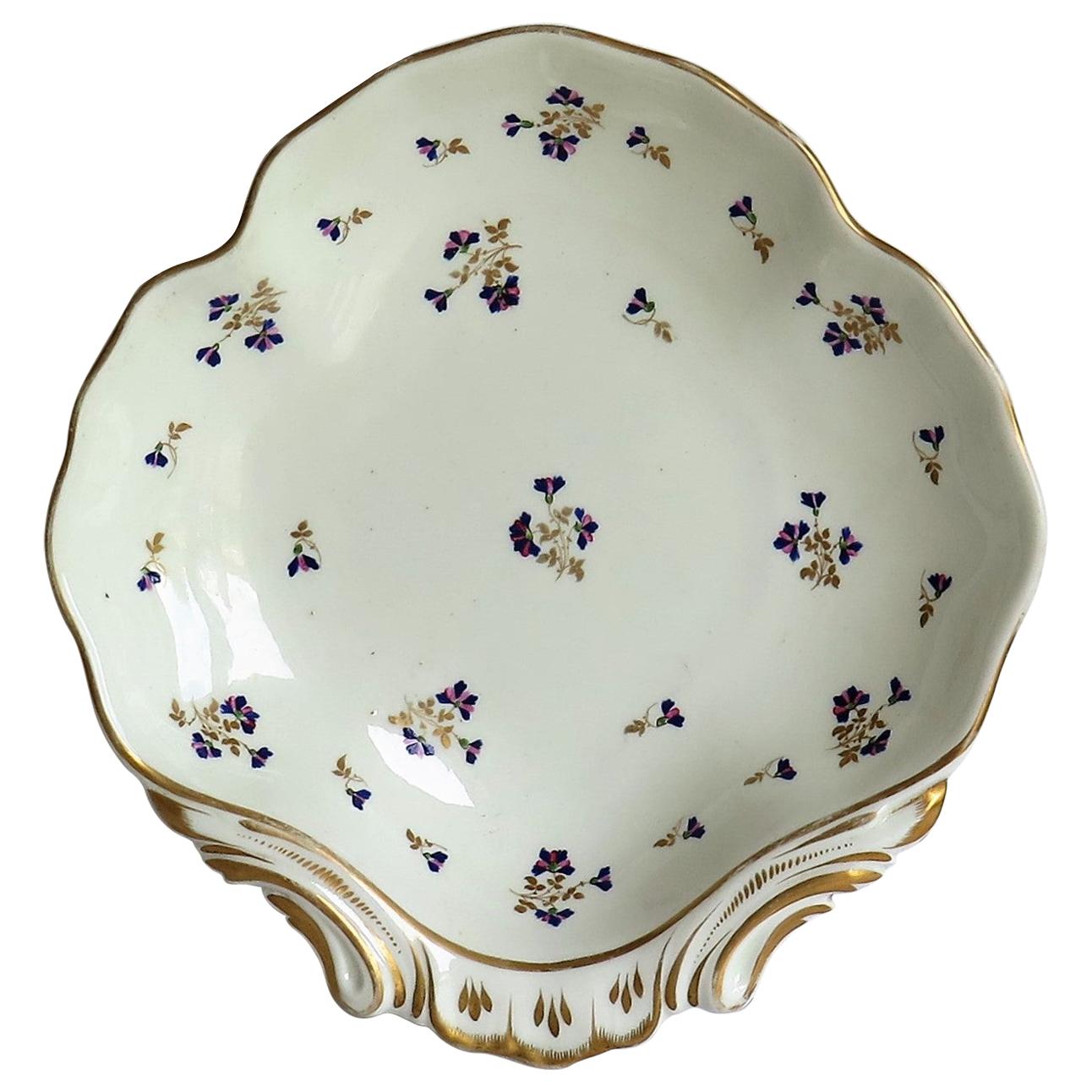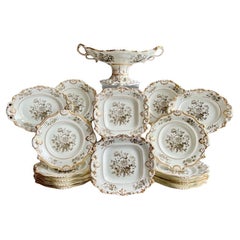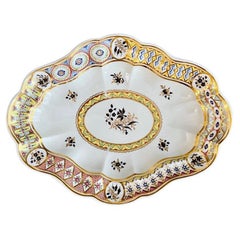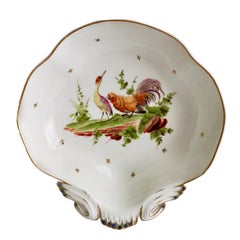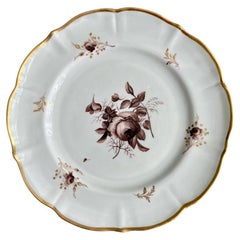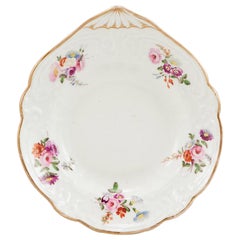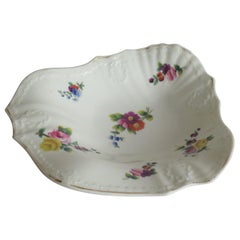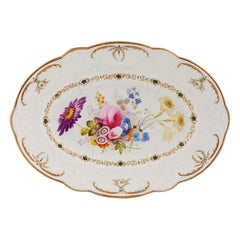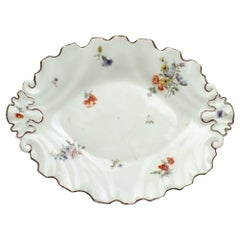Items Similar to Bloor Derby Shell Dish, White, Floral Sprigs Moses Webster, Regency, 1820-1825
Want more images or videos?
Request additional images or videos from the seller
1 of 14
Bloor Derby Shell Dish, White, Floral Sprigs Moses Webster, Regency, 1820-1825
$595
£441.76
€514.77
CA$826.05
A$923.99
CHF 480.85
MX$11,374.65
NOK 6,117.41
SEK 5,739.34
DKK 3,840.68
Shipping
Retrieving quote...The 1stDibs Promise:
Authenticity Guarantee,
Money-Back Guarantee,
24-Hour Cancellation
About the Item
This is a beautiful one-handled dessert serving dish or "shell" dish made by Derby between about 1820 and 1825 in the Regency era and decorated by Moses Webster. These dishes were to serve dessert, and the handle makes it convenient to pass around the table.
The Crown Derby Porcelain Company, later called Royal Crown Derby, is currently the oldest British porcelain factory still in production. Crown Derby was one of the most prominent potteries right from the start of English porcelain production in the mid-1700s to today. Their items are of exceptionally high quality and many of the designs have become iconic, particularly the Imari designs; many of these are still being made today. The marking at the bottom of the items indicates that the set was produced some time between 1806 and 1825, but the style it typically from about 1820-1825.
Derby became famous for very fine flower paintings, and the decoration of very finely painted flower garlands and beautiful bouquet in the centre of the plate is a testament to that. The flowers were painted by Moses Webster, who spent most of his life working for Derby (from about 1820 to his death in 1870).
The dish is marked with the red Derby mark that was used between 1806 and 1825.
Condition report The plate is in very good condition without any damage or repairs, however it is crazed throughout, as visible in the pictures. There are two small firing cracks in the rim, one of which is shown in the last picture. These do not stand out at all and happened during production.
Antique British porcelain is never perfect. Kilns were fired on coal in the 1800s, and this meant that china from that period can have some firing specks from flying particles. British makers were also known for their experimentation, and sometimes this resulted in technically imperfect results. Due to the shrinkage in the kiln, items can have small firing lines or develop crazing over time, which should not be seen as damage but as an imperfection of the maker's recipes, probably unknown at the time of making. Items have often been used for many years and can have normal signs of wear, and gilt can have signs of slight disintegration even if never handled. I will reflect any damage, repairs, obvious stress marks, crazing or heavy wear in the item description but some minor scratches, nicks, stains and gilt disintegration can be normal for vintage items and need to be taken into account.
There is widespread confusion on the internet about the difference between chips and nicks, or hairlines and cracks. I will reflect any damage as truthfully as I can, i.e. a nick is a tiny bit of damage smaller than 1mm and a chip is something you can easily see with the eye; a glazing line is a break in the glazing only; hairline is extremely tight and/or superficial and not picked up by the finger; and a crack is obvious both to the eye and the finger.
Dimensions: 21cm (8.25") x 23.5cm (9.25").
- Creator:Bloor Derby (Maker)
- Dimensions:Height: 2 in (5.08 cm)Width: 8.25 in (20.96 cm)Depth: 9.25 in (23.5 cm)
- Style:Regency (Of the Period)
- Materials and Techniques:
- Place of Origin:
- Period:
- Date of Manufacture:1820-1825
- Condition:Wear consistent with age and use. No damage or repairs; crazing as visible in the pictures and two small insignificant firing cracks in the rim.
- Seller Location:London, GB
- Reference Number:Seller: A-DER321stDibs: LU4805119504102
About the Seller
5.0
Gold Seller
Premium sellers maintaining a 4.3+ rating and 24-hour response times
Established in 2016
1stDibs seller since 2019
225 sales on 1stDibs
Typical response time: 2 hours
- ShippingRetrieving quote...Shipping from: London, United Kingdom
- Return Policy
Authenticity Guarantee
In the unlikely event there’s an issue with an item’s authenticity, contact us within 1 year for a full refund. DetailsMoney-Back Guarantee
If your item is not as described, is damaged in transit, or does not arrive, contact us within 7 days for a full refund. Details24-Hour Cancellation
You have a 24-hour grace period in which to reconsider your purchase, with no questions asked.Vetted Professional Sellers
Our world-class sellers must adhere to strict standards for service and quality, maintaining the integrity of our listings.Price-Match Guarantee
If you find that a seller listed the same item for a lower price elsewhere, we’ll match it.Trusted Global Delivery
Our best-in-class carrier network provides specialized shipping options worldwide, including custom delivery.More From This Seller
View AllMinton Dessert Service, Inverted Shell White with Monochrome Flowers, ca 1830
By Minton
Located in London, GB
This is a stunning dessert service made by Minton probably around the year 1830, in their "second period". The service consists of a high footed centre piece, two square dishes, two ...
Category
Antique 1830s English Rococo Revival Dinner Plates
Materials
Porcelain
$5,325 / set
Free Shipping
Caughley Dish, Harlequin Pattern in Style of Donegall Service, ca 1793
By Chamberlains Worcester, Caughley Porcelain
Located in London, GB
This is a beautiful and intriguing porcelain dish made by Caughley and decorated at Chamberlains Worcester in or shortly after 1793. The dish has a "harlequin" pattern with six diffe...
Category
Antique 1790s English Neoclassical Porcelain
Materials
Porcelain
French Porcelain Serving Dish, Heron and Cockerel La Fontaine, circa 1820
Located in London, GB
This is a incredibly charming shell-shaped serving dish made by an unknown maker in France in circa 1820. The dish is modelled in the Sèvres style and decorated with hand painted sce...
Category
Antique 1820s French Regency Platters and Serveware
Materials
Porcelain
Mansfield Porcelain Plate, Monochrome Sepia Rose W. Billingsley, 1799-1802 (1)
By William Billingsly
Located in London, GB
This is one of a pair of beautiful plates made by William Billingsley at the Mansfield Pottery, between 1799 and 1802. The plates, manufactured by Coalport, have a pleasing slightly diapered shape. They were decorated with beautiful monochrome sepia flowers and a simple gilt rim by William Billingsley.
Please see separate listing for the matching plate; I would be happy to offer some discount if you interested in purchasing both plates.
William Billingsley was a brilliant but notoriously difficult man who left behind a trail of debts, broken hearts and mystery - but he was also one of the most important people in the history British porcelain. Billingsley revolutionised the way British decorators painted flowers; he added a freedom and artistry that now singles out British flower painting, and he created a new technique for painting roses, which you can see in this design. Billingsley trained and worked at Derby, and then started his own pottery at Pinxton. He then left to start a decorating studio at Mansfield, where he decorated wares from various potteries, among which Derby, Coalport, Whitehead and others. After that, he spent a period in Worcester, and then went to Wales where he set up a pottery in Nantgarw, worked at the Swansea pottery for a while and then returned to Nantgarw. While in Nantgarw he created some of the best porcelain ever made, but racking up great debts. He ended up running off in the dead of night and ending his days at Coalport painting flowers.
Items painted by William Billingsley are rare and very much in demand - together with Thomas Baxter's work they are probably among the most desired pieces of British porcelain.
The plate is marked with an impressed 7, the number associated with Billingsley. The attribution of this plate to William Billingsley is due to the fact that he painted nearly identical flowers on a Coalport jug...
Category
Antique Early 1800s English George III Porcelain
Materials
Porcelain
Derby Kidney Dish, William Quaker Pegg, Scarlet Lychnis & Gentianella, c1814
By Derby, Quaker Pegg At Derby
Located in London, GB
This is a stunning and extremely rare kidney shaped serving dish made by Derby between about 1813 and 1815. The dish is painted with bright red and blue flowers by William Quaker Peg...
Category
Antique 1810s English Regency Porcelain
Materials
Porcelain
Samuel Alcock Plate, Inverted Shell, Flowers, Provenance G.A.Godden Regency 1822
By Samuel Alcock & Co.
Located in London, GB
This is a very striking and rare square dessert serving dish made by Samuel Alcock, circa 1822. The dish has a hand painted flower landscape in an unusual style. The dish has provena...
Category
Antique 1820s English Regency Platters and Serveware
Materials
Porcelain
You May Also Like
A Nantgarw Porcelain Shell Shaped Dish, c1820
By Nantgarw China Works
Located in Tunbridge Wells, GB
A Nantgarw Porcelain Shell Shaped Dish, c1820
Welsh porcelain is amongst the most highly regarded of all early 19th century porcelains. The colour and decoration is always of the hi...
Category
Antique 19th Century English George III Porcelain
Materials
Porcelain
H & R Daniel Porcelain Shell Dish in Pattern 3884 fine quality, circa 1830
Located in Lincoln, Lincolnshire
This is a fine porcelain Shell Dish, beautifully hand painted in pattern 3884 and made by H & R Daniel of London Road, Stoke, Staffordshire Potteries, England.
Pieces by H & R Daniel are beautifully decorated and sought after, being very expensive when first made.
The dish is quite large and well potted with an embossed raised moulded design to the upper outer rim section. The pattern is called Ribbon & Wreath, pattern number 3884 and is fully recorded as an H & R Daniel pattern. It is finely hand painted with individual flower sprigs, with a gold gilded inner rim edging.
The dish has 3884 hand painted in red on the inner foot rim.
A beautiful piece by this renowned high quality factory
NOTES: H & R DANIEL
Henry Daniel (1765-1841) was an enameller and colour maker. Prior to setting up his own manufactory in 1822 he ran a business within the Spode II* factory from at least 1805 to August 1822.
In 1822, Henry formed his own business. Richard (1800-1884) Henry’s second son was officially made a partner in 1826. The manufactory known as H & R Daniel continued until 1846 when it ceased due to insolvency.
Daniel’s wares were said to be on a par with the best hand painted porcelain of the time. Prestigious customers included the Earl of Shrewsbury...
Category
Antique Mid-19th Century English Regency Ceramics
Materials
Porcelain
A Swansea Porcelain Oval Dish, c1820
By Swansea Porcelain
Located in Tunbridge Wells, GB
A Swansea Porcelain Oval Dish, c1820
Additional information:
Date : c1820
Period : George IV
Marks : Unmarked. Label for Leslie Joseph collection
Origin : Wales
Colour : Polychrome
...
Category
Antique 19th Century English George IV Porcelain
Materials
Porcelain
Chelsea Porcelain Oval Moulded Silver Shape Dish, c1755
By Chelsea Porcelain
Located in Tunbridge Wells, GB
Chelsea Porcelain Oval Moulded Silver Shape Dish, c1755
Additional information:
Date : c1752-56
Period : George II
Marks : Red anchor
Origin : Chelsea, London, England
Colour : Poly...
Category
Antique 18th Century English George II Porcelain
Materials
Porcelain
A Fine Swansea Porcelain Oval Dish, c1820
By Swansea Porcelain
Located in Tunbridge Wells, GB
A Fine Swansea Porcelain Oval Dish, c1820
Additional information:
Date : c1820
Period : George IV
Marks : Red capitalised Swansea mark as shown. Label for Leslie Joseph collection
O...
Category
Antique 19th Century English George IV Porcelain
Materials
Porcelain
Georgian Derby Shell Dish or Plate Hand Painted & Gilded Pattern 129, Ca 1810
By Royal Crown Derby Porcelain
Located in Lincoln, Lincolnshire
This is a beautiful porcelain shell dish or plate hand painted and gilded in pattern 129, made by the Derby factory, in the reign of George 111 in the early 19th century, circa 1810.
Shell dishes, named as such for taking the shape of a shell were used in Dessert services.
This dish has been exquisitely hand decorated in a French influenced "Chantilly" pattern ( No. 129) consisting of scattered sprigs of cornflowers in pink, blue and green with gilt leaves and with further rich hand gilding around the rim and handle section.
The dish has the early Derby...
Category
Antique Early 19th Century English George III Decorative Dishes and Vide...
Materials
Porcelain
